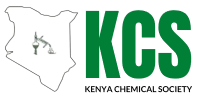Humphrey L. Mudoga1*, Patrick Kuloba1, Fredrick Kengara2, Chrispine Kowenje2
1Department of Research Technology and Innovation, Kenya Industrial Research & Development Institute,
P. O. Box 30650–00100, Nairobi, Kenya
2Chemistry Department, Maseno University, Private bag, Maseno, Kenya
Abstract
Six bagasse based carbons and two commercial activated carbons (AC) were evaluated for efficiency in the level of decolourisation of sugar syrup. The effect of bagasse activated carbon dosage in the range 0.2 –1.0 g per 100 ml syrup was determined. The Braunauer-Emmet-Teller (BET) specific surface area, pore size and pore volume of the samples were determined using the N2 adsorption-desorption isotherms. The bagasse activated samples were analysed using standard methods including UV-Visible spectroscopy to evaluate the effectiveness for percent colour removal from sugar syrup and compared with the two commercial activated carbons. The colour removal capabilities of all carbons were measured at 1/100 (w/w) dosage. The results showed activated carbon from bagasse activated for 5h at a temperature of 6000C (600/5) was comparable to commercial activated carbon (WP 320) by their high surface areas and syrup decolourisation efficiency. Their pH values were also in the range 6-8 that makes them suitable for sugar refining.
Keywords:
Activated carbon, decolourisation, sugar syrup
